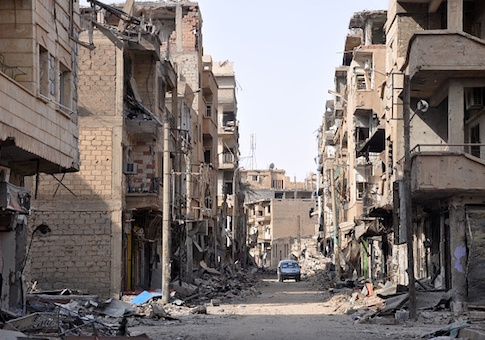Activists working to uncover mass graves are struggling to identify human remains and shed light on atrocities committed by Islamic State in northeastern Syria, a former IS stronghold where thousands of bodies have yet to be recovered.
Bodies already recovered from mass graves in the vicinity of Raqqa consist of victims of IS violence and IS fighters themselves, as well as residents killed in airstrikes by the United States-led anti-ISIS coalition, the Associated Press reports. Islamic State ruled its territories brutally, using mass killings, beheadings, and drownings to foster terror.
Human Rights Watch highlighted some of the challenges activists face:
With an unknown number of mass graves in the city of Raqqa and surrounding areas and thousands of bodies left to be recovered, local authorities affiliated with the Raqqa Civil Council are struggling to cope with the logistical challenges of collecting and organizing information about the bodies recovered and providing it to families searching for missing or dead relatives. Identifying missing people and preserving evidence for possible prosecutions will have implications for justice in Syria as a whole.
Priyanka Motaparthy, acting emergencies director of Human Rights Watch, warned that "without the right technical assistance, these exhumations may not provide families with the answers they have been waiting for and could damage or destroy evidence crucial to future justice efforts."
Mass grave sites must also be cleared of landmines before activists can exhume and identify bodies. Landmines planted by IS combatants in and around Raqqa have killed or injured hundreds of civilians since the terrorist organization was pushed out of the city last October.
Raqqa was the capital and centerpiece of a self-proclaimed IS caliphate, which covered a third of both Syria and Iraq at its height in 2014. U.S. military officials announced last December that a sustained operation by the U.S. forces and its allies had reduced the size of IS territory by 98 percent over the past few years.
